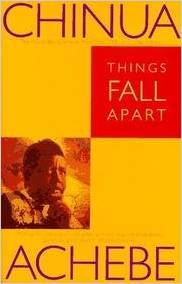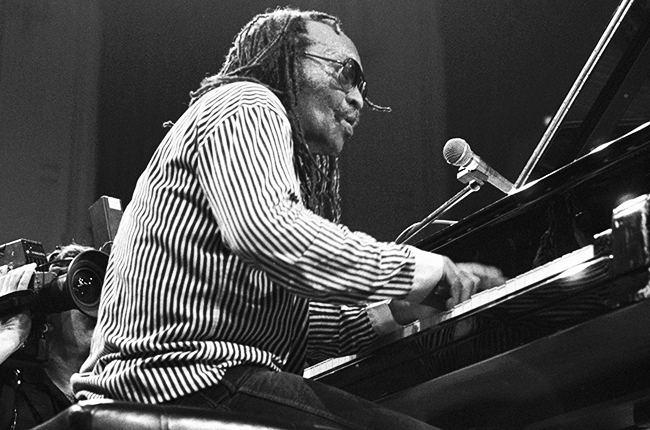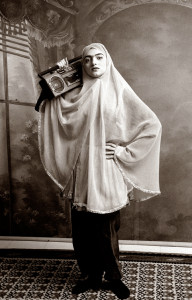
So how are artists representing identity in a space between cultures relevant to our time? They are more than ever needed, for they push forward new ways of thinking, new rules, and a new world where different ways of thinking are merged and accepted. They hold several emics within them. They are pioneers, recreating histories and allowing it to flow through different paths never questioning its different authenticities, because it knows all is possible. They are the product and the answer to our globalized multicultural world.
Ghanese-Dutch artist Marijke Everts on identity and home in multi cultural world.
A Space Between Cultures.
Identity in Contemporary Art.
INTRODUCTION
From a personal interest in working with identity and cultures in contemporary art, I wish to discuss the link between the three (identity, cultures and contemporary art) and how artists embody them into their works.
My interest in this topic arises from my own background as a half Ghanaian half Dutch fine arts student, who has also lived longer in Senegal and Italy than both my parents countries’ combined. A while back, when I first started embodying identity into my art, a wish to bring my Ghanaian, and Dutch self into an artwork always produced strange incomprehensible projections of myself. To then add Senegal and Italy to it (as I consider them big parts of my identity) would create a mess. Confronting myself, and my works I would ask myself, what am I? And am I incomprehensible?
Through my research I have found that the incomprehensible and chaos of one’s multiple backgrounds is a theme in art made by artists who constantly find themselves in this space between cultures and needing to express this topic of identity that ends up becoming much of an issue in itself. Be it from their diasporic history, migration, multi ethnic backgrounds or their society’s refusal to keep up with the modern age, they all relate to the sense of loss. The “not belonging” and not completely fitting in to their society. The question being posed in this thesis is: How is identity represented by artists in a space between two or more cultures and what is its relevance in our time?
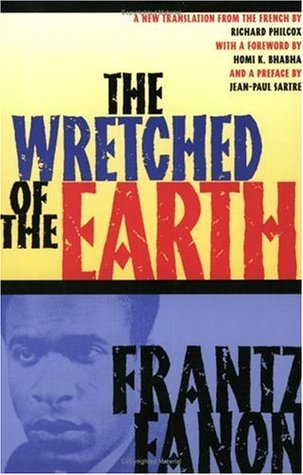
Chapter one touches upon the influence of colonialism and its effect on creating multiple identities through the books The Wretched of the Earth by Frantz Fanon, The Poisonwood Bible by Barbara Kingsolver and Things Fall Apart by Chinua Achebe. Chapter two then goes on to analyze the mass mixture of dual or more identities in America from artists Betye Saar, Howardena Pindell and Carol Ann Carter and through the books Mixed Blessings by Lucy R. Lippard and Women Artists Of Color by Phoebe Farris. This then creates a path for chapter three’s artists Shadi Ghadirian (photographer) and Cecil Taylor (Jazz musician) to come unto stage as they invent and create new forms of art and music to the extent that sets about new worlds and new rules. In chapter four, I will touch upon the subject of African contemporary art through the book Reading the Contemporary: African Art from Theory to the Marketplace edited by Olu Oguibe and Okwui Enwezor, this will be critical in understanding the divide between western and non-western art and how being an artist in a space between two or more cultures is important in diminishing that divide. I will be analyzing a few different ways in which identity is represented, and how it is also responded to in the art world of today. Which direction is it leading us and how important it is in the multicultural global world of ours?
*
Assuming a culture has one identity of its own, these are the people who create a third identity, and through their artworks, by a world that is rapidly globalizing itself, these are the results of their need (the artists) to understand this third identity, and where they stand in it. They (the artists) are creating works in a world (judged by a mostly dominating western world) that seems to praise (globalization) yet at the same time refuses and doesn’t understand or doesn’t want to understand (when it stops benefiting their own needs).
MIX A AND B, YOU GET WHAT? (LOST SOULS)
“(…)And once they see as I see
With the pureness of their hearts
Not with their eyes
Then and then will I truly fit in”
Fitting In by Timothy D. Prott
As I am born of Ghanaian and Dutch parents I have often struggled with my two identities, feeling incomplete, and always lacking both. In the process questioning my understanding of my works, and myself I have always come to certain thoughts that have been gnawing away at the back of my mind which in a shock, I was confronted by with a text on the first Africans to be brought to Europe to learn the European ways in words other than my own:
He saw them as essentially lost beings (…) and in consequence have become blanks, soulless, neither one thing nor another. (1)
*
This is a comment on philosopher Jean-Paul Sartre’s introduction to Franz Fanon’s The Wretched of the Earth made by Thomas McEvilley. Thomas McEvilley basically states that Jean-Paul Sartre saw the first African Europeans as people that were lost and in turn were ultimately nothing, neither European nor African. What struck me about that comment was how I identified myself in those words without a second thought, and to read it made it a reality outside of my own mental framework. It assumed that the process of cultural mixing is destructive and that you as a human being were whole before adopting willingly or by force the new ways (of a different culture) into your own. At first glance this could seem a bit absurd since cultural mixing has been going on even before the first western colonial settlers came about in Africa, but after reading a few novels (which will be mentioned) based on historical events, there were certain things in these novels that hung true and could not be denied as otherwise.
*
Things Fall Apart and The Poisonwood Bible are two books that refer to this consciously. Things Fall Apart is by Nigerian writer Chinua Achebe, depicts the influence of colonialism and missionaries in the late nineteenth century on the Igbo community in Nigeria, while The Poisonwood Bible is by American writer Barbara Kingsolver set in Belgian Congo’s awakening into post-colonialism. Both are novels with references to undeniable historical facts.
*
In the book The Poisonwood Bible a missionary family travels to Congo in the hopes of making a difference to a tribe and saving their souls. At a particular scene in the book Nathan Price, the family head: a Baptist missionary, tries to get the people of Kilanga in Congo to adopt the western way of voting, he is first met with doubt but then followed, none the less only to have it turned against him. He tries to get them to vote between Jesus and their own God being the one God for the village people. They do not vote in his favor and he is left frustrated.
“Our way was to share a fire until it burned down ayi? To speak to each other until every person was satisfied (…) white men tell us: Vote Bantu! They tell us: You do not all have to agree (…) even a child can see how that will end” (2)
*
As the villagers began to adopt the voting system for many occasions, it began to leave many who were part of the minority vote frustrated, and throughout the novel you are made aware of how the democratic voting system and other western afflictions destroy the balance the community seemed to have had. On the subject of democracy and the quote I just presented, alumni student of the academy Uriel Adam stated : “Interesting point about their having used to be a culture of speaking until everyone was satisfied, and democracy, which we consider to be summum (highest) of fairness, disrupting this. Of course this only works on a small scale. But then maybe that’s why some things function better when organized locally.”
*
I completely agree and understand that since we have allowed small groups to be in charge of the masses, to try and please everyone is far from possible.
In the novel Things Fall Apart you are introduced to the Igbo tribe of Nigeria, and their cultural ways, some of their beliefs seem horrific while others become understandable: in essence you are made aware that their ways are not completely perfect but it works as a whole. By the arrival of the western missionary settlers you start to see how the changes they bring with them disrupts the ways of the Igbo tribe. Changes, that by the end are forced upon them whether they wish for it or not. By the end of the novel Things Fall Apart one realizes that it is the story of a culture that has been permanently transformed. The title itself emphasizes destruction, and a shattering of what once was by the infiltration of an otherness. And so to go back to Sartre’s introduction to The Wretched of the Earth, which states this:
“The European elite undertook to manufacture native elite (…) with principles of Western Culture (…) after a short stay in the mother country they were sent home, whitewashed. These walking lies had nothing left to say to their brothers; they only echoed. And further more they turned to the west to proclaim: You are making us into monstrosities.” (3)
*
It is no wonder that Thomas McEvilley assumes Sartre’s reproaches cultural mixing in a sense that it becomes a destruction of wholeness and creates monsters for they (the whitewashed native elite) see themselves as destructions and monstrosities; they do not belong. In other words Sartre and the two novels, Things Fall Apart and The Poisonwood Bible emphasize how colonialism brought destruction upon the African people, through the west wanting to turn the Africans more into themselves. Somehow proclaiming them as then civilized and more like them, they created destruction and a confused new breed of Africans who considered themselves to be monsters because they could not relate to their own people and were not accepted by the whites either. They became a breed of lost souls.
So I become confronted with the truth of the colonial pasts and its devastating effects on third world countries to this day, and the thought that one is only seen as pure when one is culturally whole when there has been no infiltration or taint of one culture merging with another. In the book Art & Otherness by Thomas McEvilley, modernism is referred to as stating that every object has its essence and that it loses its essence once it is taken out of its place: for example African masks in Europe lose this essence and, their purpose in life for they have been brought somewhere where their use has been altered. In fact it talks about how the alteration of what once was to fit another purpose destroys the object in process. So with such a mind frame, a work that is a collage, bringing different objects, spaces, and cultures together in reality is a work that has destroyed the pureness of such object spaces and cultures, and therefore has only brought each together as “lost”. The work in itself took away their souls by bringing them together to make a soulless vacuum.
*
As today’s world progresses, new breeds of lost souls emerge and some of them use art as their platform to express their sense of not fitting in, to also proudly show the chaos that is themselves from their multi-ethnic backgrounds. Some express it through their diasporic travels, while others through their culture’s repression of the modern ways. These lost souls take up on many forms but their common role is that of having to stand in two different places at once, in other words their common role is to occupy a space between different cultures, if it means creating soulless artworks in the process. This is not meant negatively, the viewer sees them as soulless because they combine two or more objects in one. Taking an object from one place bringing it to another may in itself seem as though you have given the object no meaning anymore, it has been ripped from its essence, but being soulless is something positive, it represents the artists themselves, and as you read on, you will understand why.
MIXED BLESSINGS
“The culture which develops on the new soil must therefore be bafflingly alike and different from the parent culture: it will be complicated sometimes by whatever relations are established with some native race and further by immigration from other than the original source. In this way, peculiar types of culture-sympathy and culture-clash appear.”–
Notes towards the Definition of Culture by T.S Elliot
To occupy this space between cultures is in itself creating chaos, and chaos is what I felt most of all. As my own works are a representation of myself, I who felt incomplete and lacking, then my works in turn were my lacking and incomplete self outside of my own body. I had then recreated my own lost soul, my self-destruction not a destruction of myself as a whole entity but the whole entity itself being a composition that was in itself destruction. In a sense I mean I created a deconstruction of myself as a whole, taking bits apart and unfolding them as a way of analyzing these. The theme of cultural hybridity and displacement seem to be common in the works of quite a few contemporary artists of “color”. Through the book Mixed Blessings by Lucy Lippard I found artists who identified themselves living in this space between cultures, in a way their works described this sense of lost identities through the mixing of different cultures. What is very common between these artists is the nitpicking of different objects from different places and transforming them, giving new meaning to them in the form of artworks. Each individual piece has found its place into their artworks and its former essence may not be completely lost but brought back to speak a new truth: the truth that is in core themselves. They, the artists, all have different backgrounds, each within themselves hold different heritages which is what is brought back to life in their works. Their works are hybrids like themselves, a body of chaos and difference all mixed in together. They have found a way to speak about this destruction. They have used art as a tool and brought what is inside them out for the world to view. The sense of loss is very present because every little piece brought together is in fact lost in the work, it has no meaning on its own, it’s been forced to interact with things it’s never interacted with before, it is like a forced merging. Maybe that is what makes all their works so strong, the forced merging of objects in collages, and their sense of loss.
*
For example the artist Betye Saar who is described as a black American of mixed Irish, Native American and African heritage: Around the 1960’s as the civil rights movement in America was starting to grow, artists like Saar started to work with collage and the mixing of personal, family, cultural, and political issues. Her work The Phrenologer’s Window (1966) is based on the science of phrenology, which is the study of the shape and swelling of the skull, based on the belief that this reveals character and mental ability. Which has now been discredited.
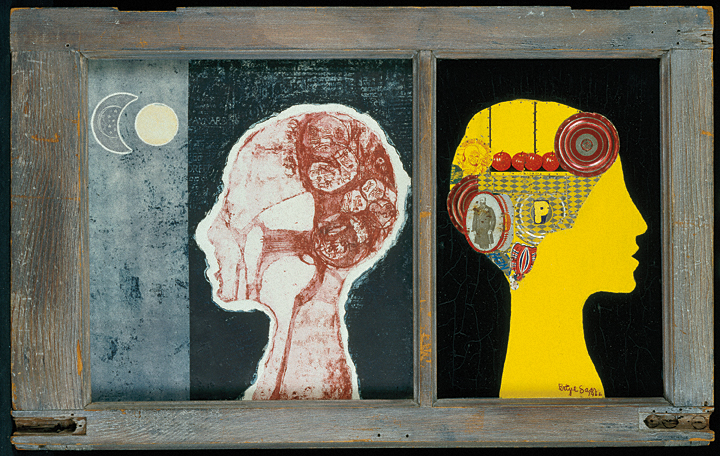 Betye Saar The Phrenologer’s Window 1966
Betye Saar The Phrenologer’s Window 1966
In The Phrenologer’s Window, Saar fixes imagery of the sun and moon, bits and pieces of advertising, old photographs, and the lid of a tin can all inside a found wooden window frame. Searching for objects becomes part of the process of her works; she goes through antic stores and thrift shops bringing her family along. On holiday she found a window that was sitting on a shed, this was the first window for her prints. Her prints then became more about her interests for the things unknown and about symbolism and signs found in alchemy. Her works are a collage and combinations of objects and symbols, turning into a state of unknown and loss for understanding. Her works have been criticized for not being understandable but she states herself that it is more about things that the people themselves have not seen or experienced instead of what is not understood. Her works always start from the familiar and gradually open up to new experiences. In a way it makes sense because as a person living in a multicultural society there is always a familiar ground that then branches out into different places each following its own path. These paths create different experiences and as an artist you try to bring together these different experiences into one whole assemblage of work because that is you in its essence. You are that same root with different paths all being part of you and your experiences. You create it and then you look at it, you understand it to an extent because it is you, it is your story, but others may not understand it. The opening up to new experiences is the turning of the loss into something bigger.
*
McEvilley writes: “The crisis of representation, then, is the potential opening mode of selfhood” (4)
What I understand from this quote in relation to artists dealing with identity, and their multi-cultural background, is that in itself, their mixed selves, the loss and not understanding of what they are. The chaos of it all is what may be the way in which they open themselves.
*
He continues by saying: “In a sense to stand in two places is to stand both in presence and in representation.” (5)For example, as an individual from one background you represent yourself and your country by your presence. Artists with mixed backgrounds and who choose to represent this in their works are always standing in two places at once. They stand in the now and they stand at the same time in a sort of space of collage, that space is where everything comes together, their history, heritages and everything that comes into contact and holds value to them. This is the representation place.
Another artist that also works with this collage mixing is Howardena Pindell. Howerdena Pindell is of African, Seminole, French, English, and German descent, with Jewish and Christian heritage. Her paintings in their early stages started mostly abstract, they were in a sense a metaphor that defined herself. They were a sort of rearrangement that spoke about fractured realities, composing a balance between compulsive order and chaos. Underneath the arrangements were fragments of political and racial statements that by the 80’s started to expand more visibly from being hidden to gradually becoming the focus points in her works.
*
The work of Howardena Pindell is often autobiographical, concerning her personal struggles and experiences, as well as her concerns about the world. She has used the richly textured surfaces of her works to reflect on her travels (she has lived and worked in Japan and India), as well as to record her recovery from an automobile accident in 1979, which has also left part of her memories lost. Her works also include much broader issues such as racism, feminism, and political violence, which in turn make her broad topic issues fitted for the different and varied materials she uses and integrates into her pieces. They, the materials, are at times man made, like nails, mirrors, and films, also organic for example dirt and blood which are then mixed most of the times with strong colored paint. Pindell sometimes incorporates cut outs of her own body into her canvases, some of which are unconventionally shaped and are cut and sewn by the artist herself. The size of her works are also an important element in her work, as Pindell usually uses smaller canvases for her more intimate and reflective pieces, while using larger canvases for works that express more bold and aggressive views of the world.
 Howerdina Pindel, Autobiography:
Howerdina Pindel, Autobiography:
Water/Ancestors, Middle Passage/ Family Ghosts 1988
Starting in 1980, Pindell began work on the “Autobiography” series, which explores her experiences as an African-American woman, artist, teacher, and activist, and incorporates her views about contemporary issues. The specific work from the series Autobiography I want to mention here is a self-portrait of the artist that celebrates the diversity of her heritage. The work includes the blank white shape of a slave ship and references to Pindell’s African ancestry and to the abuse of slave women in the United States. In the work there are also allusions to twins, which are significant in African folklore: twins in certain parts of Igbo land in Nigeria were seen as bad omens, taboo and were killed, while in Yoruba culture of Nigeria, they were treated with affection as they were thought to have divine powers. Because of the frequency of twins on both sides of Pindell’s family, it could also be a metaphor for multiculturalism. Her autobiography series delves into displacement, amnesia, and a sense of false histories. She is finding her way as a constant wanderer even though many see her and her works as out of place. In her works there are absences that become strong presences.
*
So far both Pindell and Saar have both had their works criticized as out of place or not comprehendible. I feel as though that is exactly what makes their works work. Both works bring together different materials, objects and topics together to form an entity. Pindell’s autobiography, being a vast ocean of her roots where her image is in the middle and everything else seems to be radiating out of her floating into the blue. Her work expands and moves beyond the boundaries they hold. While Saar’s work is a window into the unknown, she turns you in, into the work. The contrast of the sun and the moon, the profile faces turned against each other, both profiles separated by a thin layer of wood cutting in-between yet both still held together by the bigger frame. They are two differences in one work yet both faces. The more you look into it the more you understand the familiarity in it, because the familiar in the work is about also being in two different spaces at once. You also see that in Pindell’s work, but hers takes the shape of the ocean with fragments of difference floating around it. Through both works I feel the sense of being lost, being lost in that space that brings different worlds together but that is contradictory at the same time, and maybe that is why it claims to not be understood.
*
Enhancing more on the feeling of loss is Carol Ann Carter’s work Support System (1986). Support System is a cross reference between the male and female, elegance and ugliness. There is a theme of conflict in her work. She went to study weaving in Nigeria, leading her to the direction of weaving and embroidery in which she added her mother’s collection of buttons to the piece. She likes to create a dialogue between the materials that are brought together in her works. The artwork brings out notions of gathering, repossession, and restoration of lost cultural information. It is shades of black with dots of color influenced by African ceremonial costumes merging with her mother’s button collection. By merging the work, recreating a part of African ceremonial clothing to make it her own and adding to it part of her heritage (the buttons), she like Pindell, Saar and other artists of multiple backgrounds bring different essences together to make a whole new entity in the process. Like Carter’s other works, Support System is also a process of ripping, channel stitching, dyeing, and painting that result in a paradox.
CREATING NEW WORLDS
“(…)we must place ourselves within the world rather than only relying upon our thrownness into the world. The artist not only appears to do just that with aplomb, she also seems to thereby create new worlds, which is exactly what we might wish to do through the use of art as self-projection.”
The Role of Art in the construction of Personal Identity by G.V. Loewen.
 Shadi Ghadirian Qajar Series 1998-2001
Shadi Ghadirian Qajar Series 1998-2001
Shadi Ghadirian was born in Tehran in 1974 right at the peak of Iran’s economic and cultural explosion right before the revolution. In her Qajar Series, Shadi Ghadirian introduces us to the concept of a non-existence of identity. She plays with the fashion of the nineteenth century Iranian women. Her models are friends and family who pose with forbidden objects that can be found on the black market. She reconstructs the atmosphere of the era when photography had first appeared. About her work she states:
“I had just graduated and the duality and contradiction of life at that time provided the motive for me to display this contrast: a woman who one cannot say to what time she belongs; a photograph from two eras; a woman who is dazed; a woman who is not connected to the objects in her possession.” (6)
At first you are unaware that the costumes the women are wearing are not of her time, in fact when exposing her works at the Guildhall University in London in 1999, they thought that it was how the modern women of Iran dressed. When one assumes this of her work, questions arise as how to make others see the full impact of what your work means, how does one destroy assumptions made by a different culture on your own.
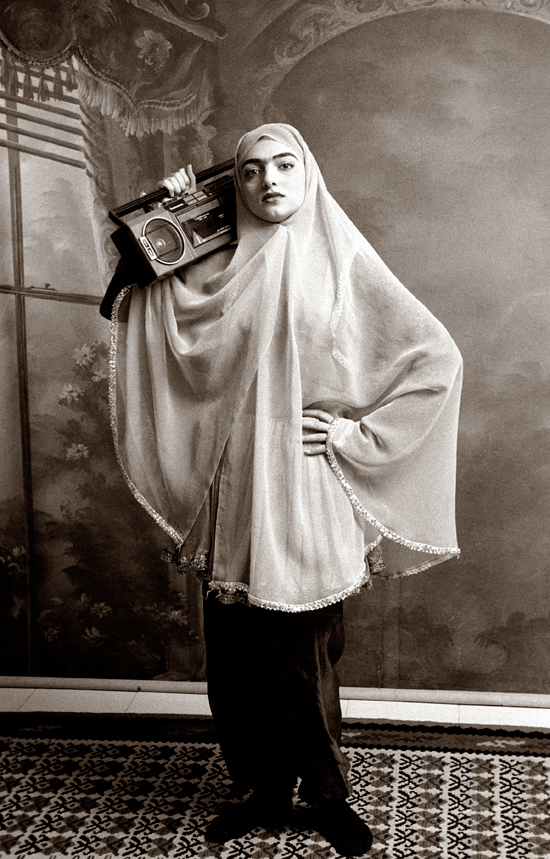 Shadi Ghadirian Qajar Series 1998-2001.
Shadi Ghadirian Qajar Series 1998-2001.
“When one culture regards the object of another, those objects are instantly incorporated into an alien mental framework: Helplessly interpreted through some habit of thought different from the habit of their makers.” (7)
Through these assumptions, her work can be seen as a mere sense of how globalizations’ simple pleasures can be seen as secret protestation in the hands of women whose culture is based on their restricted rights. Her works still yield power but the greatness of it is not fully understood until one knows that the women are also dressed from an era that gave them much more freedom than the one they are living in now. When that is known, the images hold a completely different meaning, a complete sense of loss. They are not part of the past nor are they part of the current global present.
*
“(..) a being containing part of one era and part of another at the same time is a being moving into the future (..)”(8)
When we look to these words in correlation to an artist and its artwork, it is a direct representation of Qajar Series. Though the same quote reflects on all artists I have mentioned so far for they all touch indirectly and directly on their history and their present, I automatically associate it with her works. Her photographs capture exactly two eras at the same time; she has merged two eras together into a photograph. In a sense she is questioning her country’s future, and asking if it will move forward or stand still. Like Pindell, she brings history and present together (though the present is of the outside world and not meant to be part of her country’s present), and though Pindell’s work is of a society moving into the future and a reflection of that, Ghadirian’s Qajar series is questioning this movement and in her own way creating this future in her photographs whether or not her society is going to be a part of it.
In the process of moving into the future and creating a new language artists like Ghadirian, and Cecil Taylor at the same time bring forth a new world.
Photo: Associated Press.
Cecil Taylor is an American pianist and poet who is known for bringing jazz music to a new set of rules. Taylor is a composer with a jazz background born in 1929 in New York City. His mother who was a retired dancer had him begin piano lessons at the age of five amongst other things, she wanted him to be a sort of young entertainer and had him tap dancing and entering contests and performing for their guests. She died early on in his life but had quite a lasting impact on him. He went on to study classical piano at the New York College of Music and New England Conservatory. During his time there he got exposed to modern Western compositional practices “twentieth century music at that time” (9). Taylor states how he felt about going to the conservatory and its influence on him in an interview: “Then it goes into another stage when maybe you go to school for a while and are exposed to all those influences and for a while you don’t know exactly where you are”(10) his comment on being exposed to different influences stating “you don’t know exactly where you are” brings back to this repetitive theme of feeling lost that Ghadirian, Pindell and Saar seem to go through as they are themselves made up of different influences. When Taylor moved to Boston, the European musical background that he had, began to become less and less prominent, he explored a lot more of the contemporary jazz developments, and so no longer did the European elements dominate, they began to integrate.
*
Taylor was the first jazz musician who placed himself out of the mainstream consciously, and formed his first band in 1956 in which he released his first record. During a five year time period he released eleven more records but wasn’t getting any positive encouragement from his band mates or audience, yet through this time he was developing his own language to jazz. He developed two recordings in the 60’s Conquistador and Unit Structures. A search for freedom music, lead him to collaborate with saxophonist Jimmy Lyons. In the early 70’s he started to perform as a soloist which lead to him being noticed and getting a wider audience, even performing at the white house and being awarded by Guggenheim Fellowship and McArthur Fellowship. In addition to being a piano artist Taylor has been interested in dance and ballet (as his mother was a dancer), and in the 70’s collaborated with some important dancers of the day. Along with dance and piano is Taylor’s poetry, which he has been writing since high school and has a few featured on his albums. “I never understood how musicians could play music for poets and not read poems. I don’t understand musicians who can play for dancers and not know how to dance. I mean, it’s very interesting to me, you were talking about your research; well, one of the things–before I put words down, I probably have read a thousand words.” (11)
*
Taylor’s music, though free jazz and improvisation has clear western influences lingering. He says, “I’m not afraid of European influences. The point is to use them as Ellington did- as part of my life as an American Negro” (12) He goes on to say that one must use “the energies of the European composers, their techniques consciously, and blend this with the traditional music of the American Negro, and to create a new energy.” (13)
*
Here we see the importance of blending different cultural styles in creating something new and “free”, what we call free jazz is in fact just taking fractures of two or more styles and merging them together, this newness is what is considered free. What doesn’t stand in one place, but in two or more, is free. It’s a freedom to wander off to unknown territories, which is its existence.
Along with freedom, though Taylor finds influence in the western style he also criticizes it, and in the liner notes to his piece Unit Structures Taylor writes:
“Western notation blocks total absorption in the “action” playing. The eye looks, mind deciphers, hand attacks, ear informs. The pupil mirrors only the inner light, an ear having heard identifies. Hearing is sight face away academy’s superfluity. There are not separate parts: one body and the mind enclosed. We proceed inventing. The interpretation has occurred. Emotion being aggressive partition defines the acts particularly the root of rhythm is its central unit of change eye acting upon motor responses directing motions internal movement (wave)” (14)
*
His point being that he finds that notation (in music) takes away from true emotional expression, which is the union of the body and the mind. The emphasis on the participation of the body and not just the mind as essential for improvisation comes back in his criticism of modern aleatory which is music where in some elements of composition are just left to chance.
*
To Taylor, the main difference between free jazz improvisation and aleatory is an emotional one. Jazz improvisation comes out of a human approach. And the problem with aleatory is that “(…) they [Western players] don’t want to get emotionally involved with music. It’s a theory, it’s a mental exercise in which the body is there as an attribute to complement that exercise. The ineffectiveness of aleatory in Western music is essentially a problem of experience: You have to invent a series of games to obscure the fact that essentially what you’re doing is asking musicians to improvise. Well, unfortunately, most of the so-called classical musicians in this country, except organ players, have not had any background in improvisation.” (15)
*
What Taylor is doing is criticizing the way in which musicians are taught to play, the overly controlled way which has to do with remembering and reading, hence when it comes to aleagory or improve. Taylor finds that they lack any real sense of what improvisation means as they have not learnt to play with their bodies as well. In making the distinction between Europe’s written-out aleatory and his own more traditionally jazz-based (and African-American) method Taylor states: “They [musicologists] wanted to see it down on paper to figure out its structure, its whole, but at that point I had stopped writing my scores out. I had found that you get more from the musicians if you teach them the tunes by ear, if they have to listen for changes instead of reading them off the page, which again has something to do with the whole jazz tradition, with how the cats in New Orleans at the turn of the century made their tunes. That’s our thing, and not composition.”(16)
*
It may look strange to find a connection to what I am about to write, and Taylor’s quote but at second thought it isn’t as strange as it seems and I do not understand why I wouldn’t have thought it applicable to music. Most Africans that cook learn through seeing and trying. If asking my mother for the recipe to her Jollof rice, she will tell me to look because it is impossible for her to write down how much of this or how much of that she has added to the recipe, it is all about watching trying and tasting. The African way is to see and to take action. It is also very vocal. It is not just my mother that does this, I have gone through this with several African friends, and it’s truly the African way. It is learning from sight and vocally explaining what is going on. It is known to produce better quality dishes than reading off recipes. And through these memories, I can understand Taylor’s statement on letting go of notations, and learning by ear. I myself have not studied jazz as you can probably tell, but why I decided to find out a bit about it and to write about Cecil was to give a broader sense of where this merging of styles and cultures can take you, be it in painting, photography, music or other medium forms of art. He changes the way we look at jazz music, and incorporating other forms like poetry and dance. He has made it into something more than what it originally was, he has brought different life to it, making it move in ways you couldn’t imagine it possible.
*
“Taylor’s music can be seen in terms of many great conflicts: he extensively uses many modern techniques of the European tradition, yet relentlessly criticizes that same tradition. His music employs great degrees of freedom, but at often sounds like the highly specific serialism of his contemporaries. He champions, collective improvisation, and, collective composition, yet scorns Western aleatory. His music parallels the development of Western concert music from restricted, to free (…)Despite all this, Taylor’s music can above all mostly simply be described as his own, uncompromising and reflecting his own unique experience.” (17) Chris Erway’s statement on Taylor reflects as well on artists like Ghadirian, Pindell, and Saar whose works are an embodiment of conflicts and a reflection of their own unique experiences.
OLD HABITS DIE HARD
“(…) Children of the dominant culture are rarely given the opportunity to know the world as others know it. Therefore they come to believe that there is only one world, one reality, one truth-the one they personally know; and they are inclined to dismiss all other worlds as illusions.” –
The Primal Mind by Jamake Highwater
“When and where were you born?”(…) was Abidjan a big urban centre, like today? (…)Would you tell me a little about your family?(…)How big was your family? What school did you go to? What language was spoken in your home? What religion did your family practice? Did it involve animal sacrifice? (…)I don’t have any more questions, do you have anything more to say? “(18) When reading these questions on an interview held by an art critic to an artist. What is your first reaction? Confused? Baffled? Are you asking yourself why was there no questioning of the artists’ work? It seems strange that an art critic wouldn’t even bother with the work but jump straight to background information with no desire or interest to actually get to know the artists meaning and thought behind his work. Thomas McEvilley held the interview with the artist Ouattara Watts, an Ivory Coast born French artist.
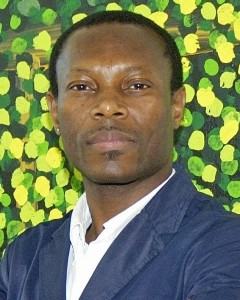 Oguibe.
Oguibe.
 Enwezor.
Enwezor.
It is in the book The Contemporary: African art From Theory to the Marketplace edited by Olu Oguibe and Okwui Enwezor that I find this interview in which Olu Oguibe goes on to say “Within the scheme of their relationship with the West, it is forbidden that African artists should possess the power of self-definition, the right to authority…. Thus is Ouattara forced, in the interview in question, to repeat and endorse a narrative of savagery.”(19) Oguibe describes McEvilley as the typical western critic whose soul interest in African art is that of dominance over it by fishing out an already existing exotic ideal of the African artist. By referring to McEvilley’s narrative of Ouattara’s responses as “savagery”, you can already sense the bitterness Oguibe feels Ouattara has against McEvilley as he is being interviewed in an all too familiar way only done to paint a picture of otherness.
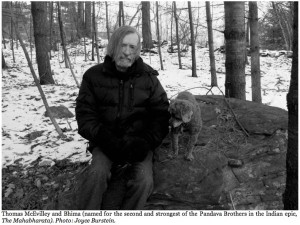
“McEvilley’s interview with Ouattara in many respects defines the limitations of appreciation and expectation, or what we might call the confines of perception, within which African artists are either constructed or called upon to construct themselves.”(20) Oguibe clearly states that indeed what is at play here is that certain questions are asked that will consciously form a specific view point of the African artists: whether the artist himself chose that path or not (to be seen as “the exotic and different from us” African artist).
*
Since colonialism has played such a huge role on the overall dominance of the western world, it is not that strange that the west should feel their opinion on what makes African art valid is more legitimate than the Africans own thoughts about their own work. Through the book The Contemporary: African art From Theory to the Marketplace it is emphasized and put to point that the west tries to differentiate itself from African artists and to keep up this otherness view towards African art. Though African artist have been influenced by the west through migration and such, these influences are dismissed when it resembles too closely that of western art. It is by far a mixed and similar experience to Sartre’s words in The Wretched of the Earth of how the creator rejects its creation when it starts to resemble the creator.
*
Oguibe goes on to state “The issue of authenticity and its attendant anxieties are of course not matters over which contemporary African artists are likely to be found losing any sleep. On the contrary, it is those who construct authenticities and fabricate identities for them who are constantly plagued with worries.”(21) This statement closely links to the perception of how western art has shaped itself through adopting and borrowing from otherness and called it authentic and new, while it tries to dismiss any art from otherness that resembles its own for fear of being in itself seen as unauthentic and only a mimic. The closer the other is to the west, the more the west feels it has to re-invent itself to differentiate itself again, this is stated as well by McEvilley in Art & Otherness: “In Hegelian terms, when members of non-Western cultures begin to adopt Western styles, they are ceasing to be nature and becoming culture. But by the same token, as they become, as it were, ethicized and supposedly more like us, they do not become controllable but less so. Their situation and ours are both changing out of control. And the search for the Other then is a search for the newness of one’s changing self” (22) Members of non-western cultures were seen by western cultures to only possess art as nature which came hand in hand with being primitive whilst western cultures art was deemed that of culture and not nature. As the search for the other becomes a search for newness “of one’s changing self” the anxieties and lack of sleep that Oguibe highlights is clearly directed at the west who must re-invent themselves according to their will to keep a solid difference between the two art worlds. Oguibe emphasizes this, when he states, “such anxieties have less to do with the facts of authenticity and the relevance of tradition, as with a desire to force African artists behind the confines of manufactured identities aimed to place a distance between their practice and the purloined identity of contemporary Caucasian art.”(23) In a broader sense it is as if the west cannot accept its own creation of merging identities and cultures, and that of course this influences the African artists that have been for a long time part of its colony. Oguibe goes on to write that the west has “a demand for the visual and formal distance without which it is impossible for contemporary Caucasian art not to reveal itself as a mimic, as a culture of quotations, as a mediated translation of cultures and art traditions other than itself, as a pastiche.”(24)Evidently it is important for Western art to emphasize a difference between her and the other in order to eliminate any traces back to the source. They (Oguibe and Okwui Enwezor) go on to write that for that specific reason, their (the west’s) outtake on contemporary African art is as a dismissal, their work thrown to the side and condemned as mimicry of western art so as to prove themselves (the western art) as original and authentic and to “displace mimesis away from itself, and to project the same on African artists.”(25)
*
So in essence what we have are artists who do not want to compile to the so called “primitive” works of art that the western art world has deemed to be the ideal African. If African artists choose to go away from the primitive and incorporate western styles they do not succeed very well in this art world. I was discussing this with a friend of mine who is half German and half Ethiopian who studies photography and he himself is trying to bring his cultures together into photography, he is trying to find his own language. As I was talking about how African artists don’t seem to be recognize in the art world, and not much seems to be known of them. He mentioned artist like Jean-Michel Basquait who became very popular in the 80’s with his neo expressionist and “primitive” paintings.
*
He said “What about him? Even though he is Afro American?” I replied “That is exactly what I am talking about, what do his works show? They are in a sense childlike and “primitive” and hence his popularity in the art world.
Which is how I understand the separation and the clear divide stating otherness and difference in identity”
The Afro American and African artist that strive in this art world are those who clearly work in the idealistic way that this art world wants them to work in. But evidently they do not represent all African art and African artists. “It is no longer possible to look at African art and see nothing but a continuous and rapid process of disintegration. We can now see that African art has responded to the social and political upheavals that have taken place all over the continent…Accepting the challenge of Europe the African artist does not hesitate to adopt the new materials, be inspired by foreign art, look for a different role in society.” (26) As Oguibe puts it, African art is a reflection on its circumstances and its environment, which are closely linked to the west. It is not news that the African artist should find influence through Europe, he adapts to his time, and his time is global.
*
When it comes to judging African art, it can get quite complicated as there are different categories that at a certain point intertwine with each other creating blurred lines making it impossible to separate one trend from another. Oguibe describes how conflicting judging African art really is by stating that “The more traditional the inspiration for a work of art, the less its general configuration and style could allow a clear assessment of the qualities of its form, its content, and the maker’s technical skills; conversely, the more westernized an oeuvre, the more easily an observer can make distinctions among these constituent elements.”(27)This being Edmund Leach’s (social anthropologist, 1910-1989) suggestion in judging African art which does not acknowledge the question of different styles. Oguibe suggests that there are two sets of criteria. One that is internal, for example the style of the artwork, its theme content and motifs. And then the external that is the context of its creation, which is part of its cultural history, the sociological milieu and the artist’s purpose of creating. This should be the two criteria allowing for the distinction of the three main contemporary African currents. The three main contemporary African currents are: the tradition trend, modernist trend, and popular art. Marshall W. Mount (African art critic and collector) distinguished four main categories of contemporary African art. First being the survivals of traditional styles, for example: Ashanti woodcarving in Ghana and brass casting in Benin and cloth work in Abomey in the Republic of Benin. The second category is art that has been inspired by the Christian missions. This work dates back to the first contacts with the Portuguese since the late fifteenth and early sixteenth century, around the west coast and Central Africa. Christian inspired art gained popularity again in the 1950’s when Christian parishes began to sponsor artists’ workshops. The third category being souvenir art, tourist art or airport art. It’s made exactly in the purpose of pleasing Europeans. Then the last category is the emerging new art that requires techniques that were unknown or rare in traditional African art, which refers to artists that have mostly been taught abroad. So because African art comes in different categories, which in turn intertwine with each other in the sense that tradition styles could be used to influence contemporary African art and in most cases are with the merging of western art, which requires intellectual thought process behind the works.
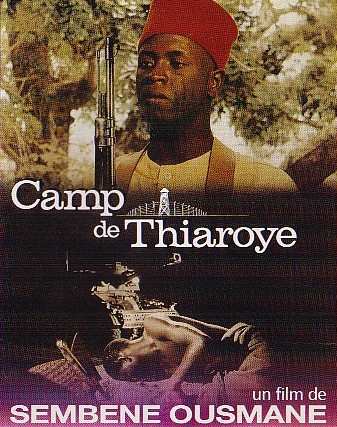
Ousmane Sembène or Sembène Ousmane was a Senegalese Director producer and writer. His films were made to meet the cultural needs of the ordinary people who didn’t speak French or who had no access to traditions of written culture. Sembène says: “Often the worker or the peasant doesn’t have time to pause on the details of their daily lives; they live them and do not have time to tie them down. The filmmaker, though, can link one detail to another to put a story together. There is no longer a traditional story-teller in our days and I think the cinema can replace him” (28) what he did was promote and transform traditional culture using western technology to meet the interests of the African culture. His interests were in finding a “dialectal relationship between the two cultures” (29) rather than playing to the “uncritical nostalgia for precolonial pure African-ness” (30) Cinema in this sense can bring oral traditions of pre-colonial and colonial times into the modern world of the post-colonial.
On this topic of accepting and using different cultural methods to bring to life one’s own dying cultural tradition in a new form, an interesting quote that I find relatable to this, by McEvilley, states “One would think that a post-colonial attitude must acknowledge different theories of knowledge, including some that imply the falsity of one’s own inherited assumptions. One is bound in other words, to betray one’s own specific ethnic inheritance in attempt to open one’s self to the reality of others” (31) And this is in a sense what most African artists do, they acknowledge the reality of the other (the west) even use it to their benefit, but calling it a betrayal of one’s own specific ethnic inheritance is far from true. It is accepting that different possibilities are right and are able to work together in harmony, it isn’t completely letting go of your own inheritance, because you don’t completely and blindly put the others reality as ultimate truth. It is the merging of both, finding the balance. For example, as Taylor (Cecil) admits great influence from the west, he still criticizes the way in which musicians are taught to play (the western way).
*
McEvilley goes on to state that “Genuinely multicultural proposals attempt to eliminate- or at least to diminish- the elements of hierarchy and centrality rather than simply to fill in the blanks with new names” (32) This is in fact true to the artists mentioned, there is no point in a hierarchy when the etic view point rules over all emic whilst we are living in a world constantly influence by otherness. Emic meaning looking into how locals think and their perception of the world, what their rules are for their behavior and what has meaning to them while the Etic stance is shifting the focus from local to what the one researching the group or culture feels is important. Etic being in this case a group that considers itself able to make decisions for emic groups who are unaware of anything outside their own cultures: in this case emic represents every culture which is nonwestern. This etic viewpoint solely creates miss understatement and leaves no room for growth outside of one’s own inherited ethnicity which in this forever changing world where the majority are somehow influenced on a daily basis by other cultures different to their own, to eliminate hierarchy is the only way to survive. Art is in constant movement and merging here and there. It’s constantly creating new languages and these new languages need to be taken into account.
*
It is happening, and the only thing holding it back is this constant cling to a set of out dated rules by a group of people who consciously or unconsciously claim dominance over the art world. The western art world -seen through the eyes of non-western artists- happens to dwell in the segregated line between them (the west) and the other (non-western) art. But there is a merging happening, and there has been since colonization. It is undeniable that what we as artist must all do, is to take a step back, reflect, and accept differences in opinion and art as equally right and see things in a universal stand point, with no hierarchy. It is undoubtedly more complicated than I make it seem, for it also requires getting to know art of different cultures through a different mind frame than our own. In a sense in viewing art of a different culture requires switching a preexisting mentality. Which is almost impossible. But what is emphasized of this era is the new world. It accepts different rules that different cultures have in judging their own art and new sets of rules are coming about as new languages keep being formed.
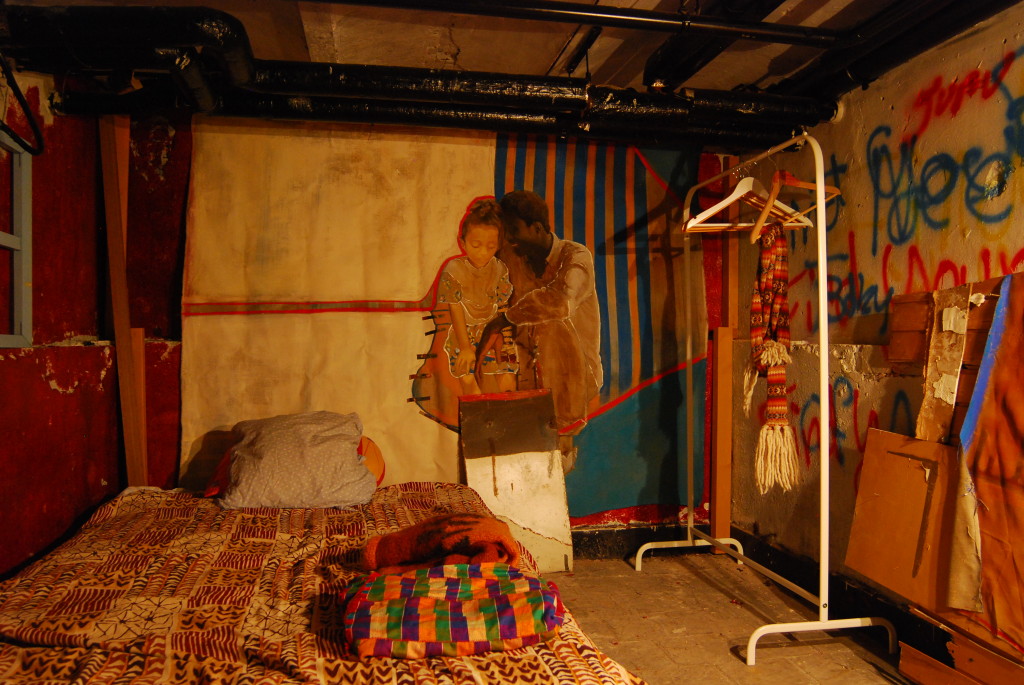 Marijke Everts, Installation, 2013-2014.
Marijke Everts, Installation, 2013-2014.
CONCLUSION
Colonization brought about this major topic of Identity and what it would mean for those affected by it. It set out a path to feel lost in. It forced merging worlds to be stuck in-between and not belong while the colonizers set about continuously merging and teaching its colony pupils to be more like them, yet setting boundaries of difference contradicting there “you will be more like us” message. This very brief statement of colonizer and colonized does not touch upon the complexity of the situation of how a loss of identity was formed but what I merely try and state is that it was a big part in what set off the roller coaster that is “what am I?” “Where do I belong?” in to which many multi-ethnic artists of today have responded. Their responses are as chaotic as their background, their response in itself is creating a belonging, creating a new world where a new language is formed merging pre-existing languages together, because that is exactly what they are, a merge of two or more different cultures. It is a way of dealing with the ongoing questioning of one’s self and ones belonging. As I look at the evolution of my own works, I subsequently understand more and more the importance of creating new worlds and languages, because in doing so in my own art, I create my own imaginary home where I belong. It is there and only there that I have the feeling of belonging and a sense of what home is. And that is when I realize that that is what all artists dealing with identity do with their works. Not fitting in to the current society that tends to push towards upholding national identity, they find a solution to their problems through their art works, and that is where they belong. That is where home is. And of course I understand this and see it: that is because this is what I deal with and choose to do with my art. But what about everyone else who doesn’t understand it, finds it chaotic and unrecognizable to what art is predominately known to be (to have certain categories and stick to them)? What is this new emergence of African art that isn’t traditional? Where does it stand and how do you critic it? Like Taylor’s jazz, and Ghadirian’s photos that create miss understandings, how is anyone supposed to understand their works? The point is you can no longer view them through eyes of dominance. They defy all reasoning of what was known to be true to art and its rules. And for this to be accepted there needs to be a universal understanding of what art is. Not what has already been set up as what it should look like (by western views). What needs to happen is an acceptance of equally strong and abundant art works of equal quality as western art that are not diminished by a set of rules that don’t apply to it. Like McEvilley puts it in Art & Otherness “Both the European and the African must develop the ability to switch value frameworks and cognitive frameworks at will” (33) meaning to be able to stand in the others shoes to see and understand the other in a way that eliminates any feeling of superiority over opinions. “Thus the etic attitude is not singular and elevated above others, but a compendium of many emicnesses” (34) Hence having instead of the “etic attitude” hovering above others, there should be a shift of focus to several possibilities that is emic.
*
So how are artists representing identity in a space between cultures relevant to our time? They are more than ever needed, for they push forward new ways of thinking, new rules, and a new world where different ways of thinking are merged and accepted. They hold several emics within them. They are pioneers, recreating histories and allowing it to flow through different paths never questioning its different authenticities, because it knows all is possible. They are the product and the answer to our globalized multicultural world.
Because history is a western invention, and is written for all through the viewpoint of the west “We are entering a period when every ethnic group or bonding or community of taste or belief will write and rewrite its own fragment of history, and probably in many conflicting versions (…) It may well be that History is over, but histories endure” (35)
FOOTNOTES
1. Mc Evilley, 1992, pg. 92
2. Kingslover, 1998, pg. 333
3. Fanon, 1963, pg. 7-8
4. McEvilley, 1992, pg. 106
5. McEvilley, 1992, pg. 106
6. Ghadirian http://newint.org/columns/exposure/2004/12/01/shadi-ghadirian/
7. McEvilly, 1992 pg. 90
8. McEvilly, 1992 pg. 94
9. Erway, http://chris.erway.org/portfolio/music/music_384-cecil_taylor.pdf
10. Wilmer, 1970, pg. 28
11. Funkhouser http://wings.buffalo.edu/epc/authors/funkhouser/ceciltaylor.html
12. Spellman, 1966, pg. 28
13. Spellman, 1966, pg. 28
14. Taylor, Unit Strcutures, 1966
15. Wilmer, 1970, pg. 25
16. Spellman, 1966, pg.70
17. Erway, http://chris.erway.org/portfolio/music/music_384-cecil_taylor.pdf
18. Oguibe, 1999, pg. 17-19
19. Oguibe, 1999, pg. 20
20. Oguibe, 1999, pg. 19
21. Oguibe, 1999, pg. 27
22. McEvilley, 1992, pg. 104
23. Oguibe, 1999, pg. 27
24. Oguibe, 1999, pg. 27
25. Oguibe, 1999, pg. 27
26. Oguibe, 1999, pg. 36
27. Oguibe, 1999, pg. 36
28. Oguibe 1999 pg. 401
29. Oguibe 1999 pg. 401
30. Oguibe 1999 pg. 401
31. McEvilley, 1992, pg. 99
32. McEvilley, 1992, pg. 142
33. McEvilley, 1992, pg. 100
34. McEvilley, 1992, pg. 101
35. McEvilley, 1992, pg. 144-145
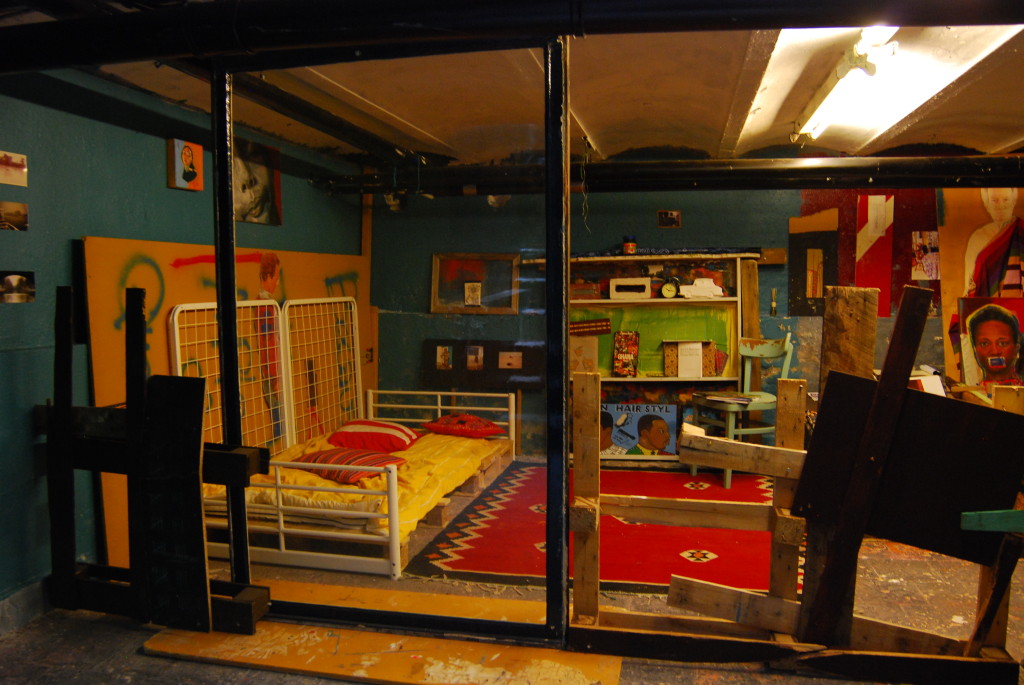 Marijke Everts, Installation, 2013-2014.
Marijke Everts, Installation, 2013-2014.
BIBLIOGRAPHY
C. Achebe, Things Fall Apart, Johannesburg, South Africa, William Heinemann, 1958.
G. Azenbor, Odera Oruka’s philosphical sagacity: Problems and challenges of conversations method in African philosophy, Akoka, Nigeria, 2009.
C. Chris Erway, Cecil Taylor, Free Jazz, and Modern Western music, www.http://chris.erway.org/portfolio/music/music_384-cecil_taylor.pdf
F. Fanon, The Wretched of The Earth, Paris, France, Francois Maspero, 1961.
Farber Leora, The address of the other: the body and the senses in contemporary South African visual art, Johannesburg, 2010.
P. Farris, Women Artists of Color a bio critical source book to 20th century artists in the Americas, Greenwood press, 1999.
R. Issa, Shadi Ghadirian Iranian Photographer, Lebanon, Chemaly & Chemaly, 2008.
P. Gleason, Identifying Identity: A Semantic History, Organization of American Historians, 1983.
B. Kingslover ,The Poisonwood Bible, New York, Harper Collins, 1998.
L. R. Lippard, Mixed Blessings, New art in a multicultural America, New York, Pantheon Books, 1990.
G. V. Loewen, The Role Of Art In The Construction Of Personal Identity, New York, The Edwin Mellen Press, 2012
Mc. E. Thomas, Art & Otherness Crisis in Cultural Identity, New York, McPherson & Company, 1992.
O. Oguibe & O. Enwezor, Reading the Contemporary African Art from Theory to the Marketplace, Italy, the Institute of International Visual Arts(inIVA), 1999.
G. Pollock, Beyond words: The Acoustics of Movement, Memory and Loss in three video works, 2008.
A.B. Spellman, Four Lives in the Bebop Business. New York, Random House, 1966.
C. Taylor. Unit Structures (recording with liner notes). Blue Notes, 1966.
C. Venn, Aesthetics, politics, identity : Diasporic problematisations, Johannesburg, Unisa press, 1992.
V. Wilmer. Jazz People. London, Allison & Busby, 1970.
(Thesis written in 2014, KABK The Hague, supervisor: Winnie Koekelbergh)

